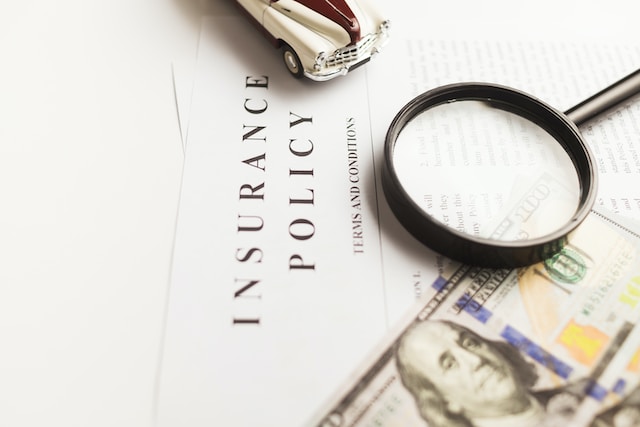Insurance companies need to verify receipts to ensure that claims are legitimate and accurate. This is especially important in cases where large sums of money are being paid out. Verification of receipts is a process that involves checking the validity of the document, ensuring that it matches the claim being made, and confirming that the items and services listed on the receipt are covered under the policy.
One way that insurance companies verify receipts is by requesting additional documentation from the policyholder or the healthcare provider. This can include medical records, invoices, and other supporting documents. The insurance company may also contact the provider directly to confirm the details of the claim and the services provided. In some cases, the insurance company may send an adjuster to inspect the damage or injury in person.
Another method used by insurance companies to verify receipts is through the use of technology. Many insurance companies have online portals where policyholders can submit claims and receipts electronically. The receipts are then automatically verified using algorithms that compare the information on the receipt to the policy coverage. This method is faster and more efficient than manual verification, but it still requires human oversight to ensure accuracy.
Table of Contents
Understanding Insurance Claims
Role of Receipts in Claims
Receipts play a crucial role in insurance claims. They are used by insurance companies to verify the expenses incurred by a policyholder and determine the amount of compensation to be paid. The process of verifying receipts is an important part of the claims process, and it is essential that policyholders understand how it works.
When a policyholder files an insurance claim, they are required to provide proof of loss, which includes receipts for any expenses related to the claim. This can include receipts for medical expenses, repairs, or replacement of damaged or stolen property.
Insurance companies use these receipts to verify that the expenses claimed by the policyholder are legitimate, reasonable, and covered under the policy. They also use them to determine the amount of compensation to be paid out.
To verify receipts, insurance companies typically follow a standard process. They will review the receipts and compare them to the policy to ensure that the expenses claimed are covered. They may also contact the policyholder to request additional information or documentation to support the claim.
It is important for policyholders to keep all receipts related to their insurance policy in a safe place. This will make it easier to provide proof of loss and ensure that the claims process goes smoothly. Policyholders should also make sure that they understand their policy and what expenses are covered, to avoid any confusion or delays in the claims process.
In summary, receipts are an essential part of the insurance claims process. They are used by insurance companies to verify expenses and determine the amount of compensation to be paid out. Policyholders should keep all receipts related to their policy and understand what expenses are covered to ensure a smooth claims process.
Verification Process
Insurance companies verify receipts to ensure that they are valid and accurately reflect the services or products provided. The verification process involves two main stages: initial receipt verification and detailed receipt analysis.
Initial Receipt Verification
During the initial receipt verification stage, the insurance company checks the basic information on the receipt to ensure that it is complete and accurate. This includes verifying the date of service, the name of the provider, the type of service or product provided, and the cost.
The insurance company may also check the receipt for any obvious signs of fraud or tampering, such as alterations or discrepancies in the information provided. If any issues are found during the initial verification process, the receipt may be flagged for further review.
Detailed Receipt Analysis
If the receipt passes the initial verification stage, it will undergo a more detailed analysis. This involves reviewing the receipt line by line to ensure that each item listed is valid and necessary.
The insurance company may also compare the receipt to the patient’s medical records to ensure that the services or products listed were actually provided. Additionally, the insurance company may check the receipt against its own list of covered services or products to ensure that the patient is not being charged for anything that is not covered by their policy.
During the detailed receipt analysis stage, the insurance company may also check for any billing errors or discrepancies. If any issues are found, the insurance company may request additional documentation or contact the provider directly to resolve the issue.
In conclusion, the verification process for insurance receipts involves two main stages: initial receipt verification and detailed receipt analysis. The process is designed to ensure that the receipt is valid, accurate, and reflects the services or products provided.
Common Challenges in Receipt Verification
Dealing with Lost Receipts
One of the most common challenges that insurance companies face when verifying receipts is dealing with lost receipts. This can happen due to a variety of reasons such as theft, damage, or simply misplacing the receipt. When this happens, it can be difficult to verify the authenticity of the claim.
To address this issue, insurance companies may require additional documentation such as credit card statements or bank statements to confirm that the purchase was made. They may also ask the policyholder to provide a written statement explaining the circumstances around the lost receipt.
Handling Forged Receipts
Another challenge that insurance companies face when verifying receipts is dealing with forged receipts. Fraudulent claims can be made by submitting fake receipts, which can be difficult to detect.
To combat this, insurance companies may use specialized software that can detect inconsistencies in the receipt such as incorrect dates, amounts, or vendor information. They may also require additional documentation such as photographs of the item purchased or a copy of the warranty.
Overall, insurance companies must be diligent in verifying receipts to ensure that only legitimate claims are paid out. While there are challenges in the process, insurance companies have developed strategies to address them and protect against fraudulent claims.
Technologies Used in Verification
Digital Receipt Verification
Insurance companies use digital receipt verification to ensure that the receipts submitted by their clients are authentic and accurate. This technology involves the use of software that can verify the authenticity of digital receipts by checking the metadata and other information embedded in the file.
Digital receipt verification software can also detect any signs of tampering or manipulation in the receipt. This technology is particularly useful in detecting fraud, as it can identify any discrepancies between the receipt and the actual purchase transaction.
AI and Machine Learning
Insurance companies are also using artificial intelligence (AI) and machine learning (ML) to verify receipts. These technologies can analyze large amounts of data and identify patterns that may indicate fraud or other irregularities.
AI and ML can also be used to analyze the context of a receipt, such as the location and time of purchase, to determine its authenticity. This technology can also compare the information on the receipt with other sources of data, such as credit card statements or bank records.
In addition, AI and ML can be used to automate the verification process, reducing the need for manual review and increasing the speed and accuracy of the verification process.
Overall, the use of digital receipt verification, AI, and ML technologies has greatly improved the accuracy and efficiency of receipt verification for insurance companies.
Conclusion
In conclusion, insurance companies use a variety of methods to verify receipts submitted by policyholders. These methods include requesting additional documentation, contacting the provider directly, and using third-party software to analyze the receipt for authenticity.
While it may seem like a tedious process, it is important for insurance companies to verify receipts to prevent fraud and ensure that policyholders receive the appropriate reimbursement for their claims. By using a combination of methods, insurance companies can accurately verify receipts and prevent fraudulent claims from being paid out.
Policyholders can help expedite the verification process by providing clear and detailed receipts, including the date of service, provider name, and services rendered. It is also important to keep all receipts and documentation related to a claim in case additional information is needed.
Overall, the verification process may vary depending on the insurance company and type of claim, but it is a necessary step in ensuring the integrity of the insurance system.







